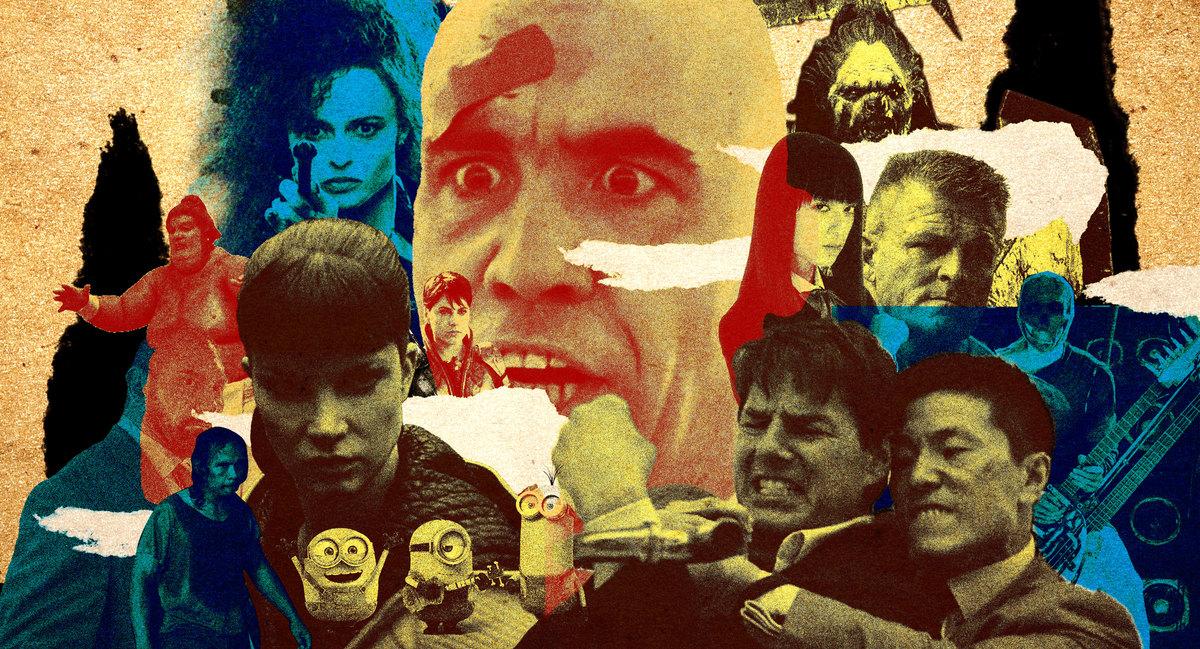The 21st-Century Henchman Hall of Fame
From the gimmicky goons of early James Bond to the slimy underlings of ‘Indiana Jones,’ henchmen have long been essential. It’s time to finally give these underappreciated characters their flowers.As someone who has long worshipped at the Altar of Statham, I must make a confession: I did not watch Jason Statham’s latest action flick, The Beekeeper, when it originally premiered in January. I assumed that any film falling in Dumpuary didn’t demand a trip to the theater; only now do I see the error of my ways. The Beekeeper, which is [checks notes] the seventh-highest-grossing movie of the year, is a work of wonderful nonsense that introduces audiences to Beekeepers, a secret organization protecting the United States—sorry, “the Hive”—without any government oversight. (Think of Beekeepers as the last line of defense against our nation’s fall into ruin.) The primary antagonist of The Beekeeper, who is later revealed to be the president’s sleazy son, seems to be a stand-in for Hunter Biden. In other words, The Beekeeper is what you’d get if the John Wick writers were mainlining Ben Shapiro.
I share all of this to underline that The Beekeeper is a ridiculous film and that, even by those standards, the late appearance of a formidable adversary for Statham’s character takes things to another level. Folks, this is Lazarus:
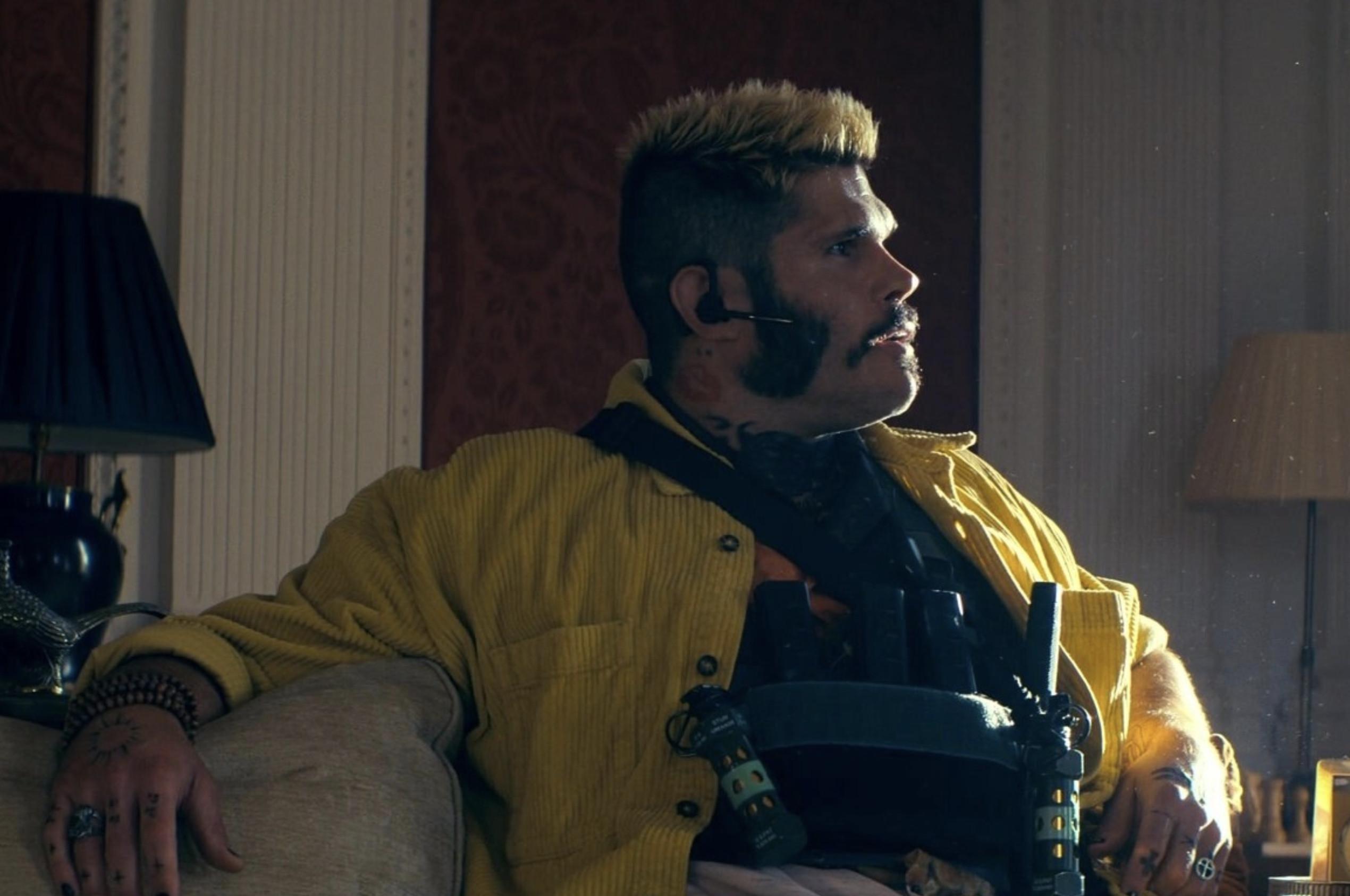
There’s so much to unpack here. For one, the character, played by Taylor James, speaks in a cartoonish South African accent that sounds like someone took a Babbel course taught by Die Antwoord. Lazarus also casually reveals that he has a peg leg, the result of a near-death encounter with a previous Beekeeper, whom he ultimately killed. (In a moment of surprising humility, Lazarus admits he was lucky to survive.) Then there’s the overall look of this dude: He’s essentially the human embodiment of a yellowjacket, and those bastards are known to attack beehives.
Even though Lazarus has, at best, 10 minutes of screen time in The Beekeeper, he easily steals the spotlight from the bigger stars in his orbit. I can honestly say I haven’t stopped thinking about Lazarus since watching The Beekeeper—to the extent that I’ve been imagining him in real-life scenarios and other pieces of pop culture. (FYI, he definitely gets kicked off planes all the time for being too disruptive; he would eagerly hunt the majestic Tulkun in the oceans of Pandora; he would be the king of FBoy Island.) But aside from all my Lazarus fantasies, the character made me think more broadly about one of my favorite cinema archetypes: the henchman.
From the gimmicky goons in the early days of James Bond to the slimy Nazi underlings throughout the Indiana Jones franchise, henchmen have long been essential glue guys (and gals). And yet, because they work in service of greater villains—and almost always get their asses handed to them by the hero—henchmen are rarely acknowledged for doing the dirty work. Well, not anymore: The Ringer is ready to give these underappreciated characters their flowers. Welcome to the 21st-Century Henchman Hall of Fame.
Before we introduce our batch of 20 inductees, let me explain the criteria. As the name suggests, we decided to include only henchmen from movies released in the 21st century and limited each franchise to one character. (This was to both narrow the pool of nominees and protect my sanity.) Other than that, it’s a pretty freewheeling exercise—some henchmen may be included for their comic relief or an epic fight scene or an unmistakable outfit. Basically, as long as they made an impression, we want to celebrate them. So, without further ado, let’s meet the inaugural class of the Henchman Hall of Fame.
Mad Dog, The Raid
If The Raid isn’t the best action movie of the 21st century, it’s certainly on the short list, and no conversation about its ass-kicking power would be complete without mentioning Mad Dog (Yayan Ruhian). The muscle behind an Indonesian drug kingpin’s operation, Mad Dog is the kind of villain who chooses to vanquish an adversary with his fists instead of a gun. “Squeezing a trigger, it’s like ordering takeout,” he tells a cop prior to beating him to death, which is one of the coldest things I’ve ever heard. What makes Mad Dog such a unique henchman is the way he subverts expectations: Google lists Ruhian at 5-foot-2, and everyone he fights towers over him. No matter: Mad Dog is lightning quick, leaping around like a steroidal spider monkey. In fact, it takes two protagonists just to take him down—and he still nearly kills them while a broken light fixture protrudes out of his neck.
Since his breakout role, Ruhian has appeared in Hollywood films such as John Wick: Chapter 3—Parabellum and Boy Kills World. (He received the rare honor of being spared by John Wick after their showdown.) It’s a much-deserved moment in the spotlight for the skilled martial artist and a win for Short Kings everywhere.
Gogo Yubari, Kill Bill: Volume 1
To understand why Quentin Tarantino featured a bloodthirsty henchwoman dressed as a schoolgirl in Kill Bill: Volume 1, you have to go back to Battle Royale. A longtime Tarantino favorite, Battle Royale was The Hunger Games before The Hunger Games, following a group of high schoolers brought to a remote island by Japan’s totalitarian government to fight to the death. Chiaki Kuriyama made a memorable impression as one of the students, and for Kill Bill, Tarantino wanted more of the same. As Gogo Yubari (side note: great name), Kuriyama’s innocent schoolgirl look belies a serious sadistic streak—she doesn’t need a second invitation to disembowel a random businessman at a bar. And when it comes time to square off against the Bride (Uma Thurman), Gogo puts on one hell of a show wielding a meteor hammer.
Gogo would soon meet a swift end at the hands of the Bride, but she lives on as henchwoman royalty.
Luv, Blade Runner 2049
If moviegoers needed a reminder that the replicants in the Blade Runner franchise possess a terrifying amount of strength, look no further than Luv (Sylvia Hoeks). The go-to enforcer for Niander Wallace (Jared Leto), Luv is tasked with finding the first biologically born replicant and has license to eliminate anyone who gets in her way. She is Blade Runner 2049’s closest equivalent to Rutger Hauer’s Roy Batty in the original film: a replicant capable of both shocking bouts of violence and genuine emotion. Exhibit A: Luv sheds a tear upon learning that the biological replicant could be dead … right before killing a police lieutenant. What’s so frightening about Luv isn’t just how easily—and callously—she takes someone out, but also how much humanity has seeped into her hardware. With all the empathy she feels for her fellow replicants, it’s safe to assume she’s learned a valuable human lesson: Love hurts. As for what Luv brings to the Henchman Hall of Fame, well, perhaps she’s proof that outsourcing work to AI isn’t always a bad idea.
Klaus, Fast & Furious 6
The Fast & Furious franchise has introduced so many characters over the years that we’ve ranked more than 50 of them at The Ringer. Singling out just one henchman feels like a losing battle, but I’m going with my gut and nominating someone who immediately passed the eye test: Klaus. As played by the Danish bodybuilder Kim Kold, Klaus shows up in Fast & Furious 6 working for the mercenary Owen Shaw (Luke Evans), who is out for revenge against Dominic Toretto (Vin Diesel) and the rest of his crew—sorry, family. Klaus is an absolute mountain of a man, and even Dom seems powerless to stop him. Of course, since it’s apparently in Diesel’s contract to never lose a fight, Dom eventually gets the upper hand against Klaus after a helpful assist from Luke Hobbs (Dwayne Johnson). The way Dom and Hobbs work together to clothesline Klaus takes me back to a simpler time, before the Fast franchise was undone by excessive sequels and the Great Candy Ass Feud of 2017:
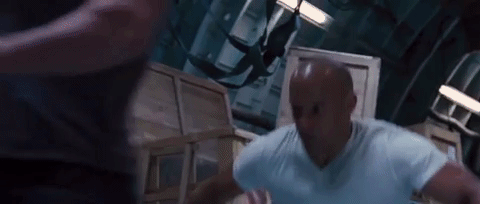
In that respect, Klaus is the ultimate Fast & Furious henchman: He brought the family together.
Fat Bastard, Austin Powers in Goldmember
This henchman was originally introduced in 1999’s Austin Powers: The Spy Who Shagged Me, an ineligible title because of its release year. But how could we omit this … Fat Bastard? Thankfully, since he also appears in 2002’s Austin Powers in Goldmember, he still makes the cut. The third character inhabited by Mike Myers in the Austin Powers franchise, Fat Bastard truly lives up to his name: He weighs a “metric ton,” refers to humans as the “other, other white meat,” and ends rare moments of emotional vulnerability by breaking wind. It goes without saying that there are elements of the character that haven’t aged well: Some of the punch lines are regrettably fatphobic, even if Myers was inspired by his own self-described issues with weight. But in a franchise that deals exclusively in juvenile humor, there’s no denying Fat Bastard was a heavy hitter.
FN-2199, Star Wars: The Force Awakens
The Henchman Hall of Fame wouldn’t be complete without cinema’s most notorious underlings from a galaxy far, far away. The only problem? Stormtroopers are the biggest punch line in Star Wars—even the most casual fans know that stormtroopers can’t aim to save their lives. But there was one stormtrooper who bucked the trend in The Force Awakens, a fighter whose scant screen time led to an outpouring of memes: FN-2199, or as he’s more commonly known, the Traitor Guy. When the First Order attacks the Resistance on the planet Takodana, FN-2199 (stunt performer Liang Yang) encounters John Boyega’s Finn, a reformed stormtrooper, and memorably shouts “TRAITOR!” in his direction. Even as Finn wields a lightsaber, FN-2199 more than holds his own, knocking his adversary to the ground with his electric baton thingy (real Star Wars term). No disrespect to Finn, but imagine getting washed by a stormtrooper:

Alas, Han Solo (Harrison Ford) saves the day, gunning down FN-2199 before he can finish Finn off. FN-2199 may be a formidable stormtrooper—perhaps the only formidable stormtrooper—but at the end of the day, he’s still no match for plot armor.
Bathroom Guy, Mission: Impossible–Fallout
Incredibly, we’re inducting Liang Yang into the Henchman Hall of Fame twice, and this time around, we can put a face to the name. Yang is credited as “Decoy John Lark” in Mission: Impossible–Fallout, but you’ll probably know him better as the dude from the movie’s epic bathroom brawl. In the sequence, Yang’s character goes up against Tom Cruise’s Ethan Hunt and Henry Cavill’s August Walker, who is later revealed to be the real John Lark. Despite the numerical disadvantage, Decoy Lark beats the ever-living shit out of them, and it’s an incredible sight to behold. I can vividly recall seeing Fallout for the first time in a packed screening, during which more than a few audience members started applauding Decoy Lark for (literally) punching above his weight:

Sadly, in a moment that mirrors Yang’s unceremonious end in The Force Awakens, Decoy Lark is shot by Ilsa Faust (Rebecca Ferguson) moments before he can deliver the fatal blow. The strongest endorsement I can give Yang’s kick-ass performance is that, even in a franchise where Hunt is constantly putting his life on the line, our hero has rarely seemed closer to death.
Faora-Ul, Man of Steel
On the heels of the genuinely unwatchable Rebel Moon films, it’s a strange time to go to bat for Zack Snyder, but I must come clean: His superhero blockbusters are … kind of awesome? I’ve really come around to Man of Steel, in particular, and there’s one character who always pops off the screen: Faora-Ul (Antje Traue). The second-in-command to General Zod (Michael Shannon), Faora is a ruthless warrior, going so far as to boast to Clark Kent (Henry Cavill) that her lack of morality provides an “evolutionary advantage” over him. Faora also features in the best sequence illustrating the difference between the godlike Kryptonians and our comparatively feeble species, as she tosses around a bunch of armed soldiers like rag dolls:

For the intimidation factor alone, Faora commands our respect—and a place in the hallowed halls.
Antonin Dovchenko, Indiana Jones and the Kingdom of the Crystal Skull
The original Indiana Jones trilogy wasn’t eligible, but we still had two sequels worth of henchmen to pick from: Kingdom of the Crystal Skull, easily the worst entry in the franchise, and Dial of Destiny, one of the biggest box office bombs of 2023. This was an easy choice to make, though, because Crystal Skull features the franchise’s most traumatizing death scene since that guy got his heart ripped out in Temple of Doom. Remember the Soviet colonel Antonin Dovchenko (Igor Jijikine)? OK, the name probably doesn’t ring a bell, so here’s another clue: REMEMBER THAT GUY WHO GOT EATEN ALIVE BY JUNGLE ANTS?
Colonel Dovchenko, thank you for instilling in me an irrational fear of ants, which I presume are absolutely capable of dragging a human into an anthill and eating them alive.
Mr. Hinx, Spectre
The early decades of James Bond were responsible for many memorable henchmen, but the franchise has been lacking in this department since the turn of the century. Thankfully, 2015’s Spectre was a welcome return to form with the introduction of Mr. Hinx (Dave Bautista). The top assassin for the film’s eponymous criminal organization, Mr. Hinx doesn’t need to say a word to leave a lasting impression in his first scene, gouging out the eyes of a fellow Spectre member to take over their position. (I prefer The Ringer’s approach to career advancement, which doesn’t require killing coworkers in cold blood.) As far as Bond predecessors go, Mr. Hinx’s closest analogue is probably From Russia With Love’s Red Grant (Robert Shaw), a taciturn henchman oozing with menace. And like Grant, Mr. Hinx meets his end on a train, engaging in a brutal fight with Daniel Craig’s 007 before delivering his only line of dialogue when his fate is sealed: “Shit.” I couldn’t have said it better myself.
The Russian, The Punisher
Sticking with wrestlers turned actors, Kevin Nash has carved out an interesting filmography, popping up in everything from Teenage Mutant Ninja Turtles II: The Secret of the Ooze to John Wick to Magic Mike. But his best performance came in 2004’s The Punisher, in which Nash was tasked with playing the Russian, a swole assassin assigned to kill Frank Castle (Thomas Jane). The fight itself is uncompromisingly brutal—Jane actually ended up stabbing Nash with a real knife in a prop mishap—but what truly elevates the scene is the hilarious juxtaposition between the R-rated violence and the Russian’s comic-accurate outfit:
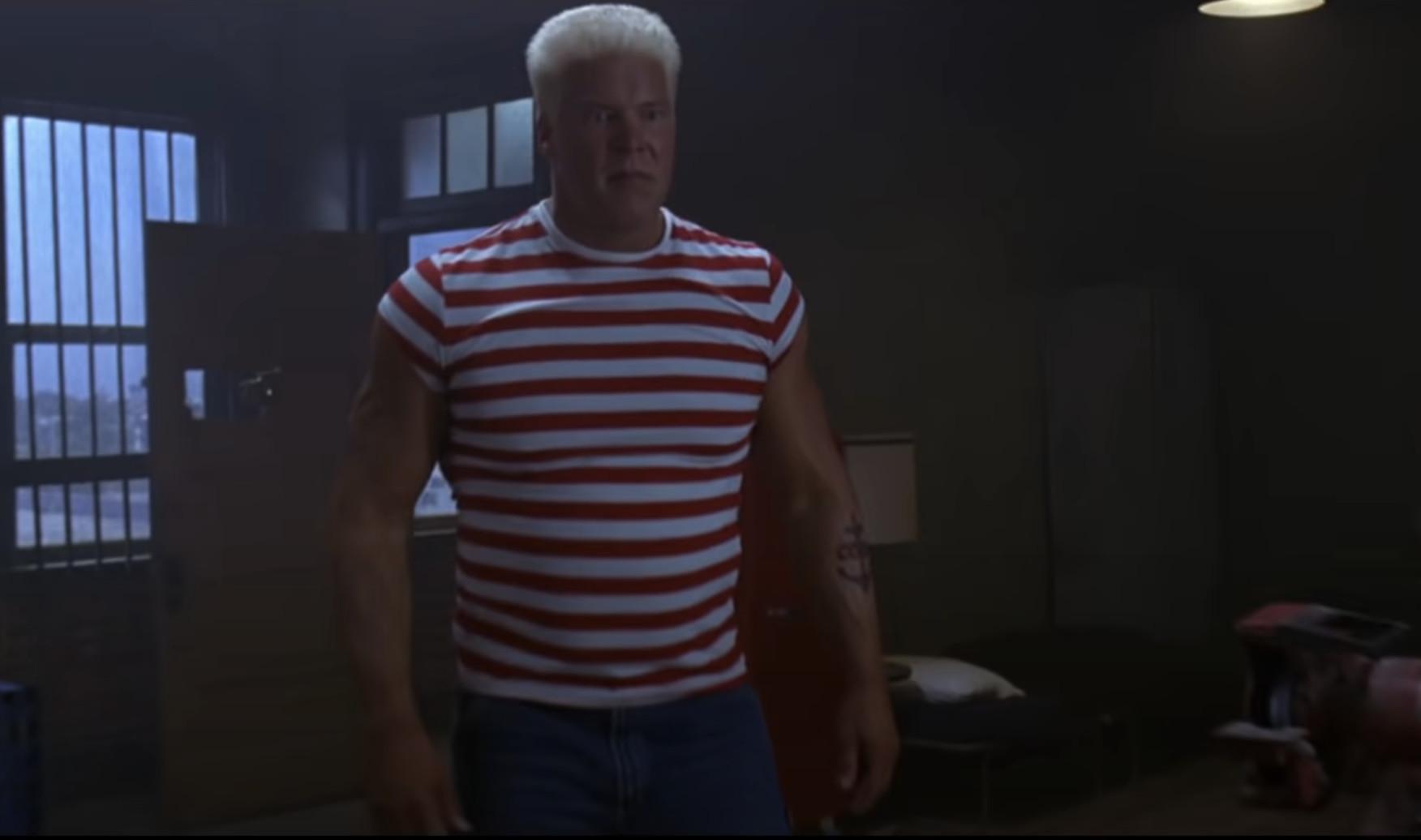
This is exactly what a little Bavarian boy would wear while picking up a tasty marzipan treat. Rest assured, we’ll be hanging up the Russian’s shirt in the rafters.
Cassian, John Wick: Chapter 2
John Wick (Keanu Reeves) has killed a whopping 415 people across his eponymous franchise, many of them no-name goons, but the henchman we’re nominating is someone whose fate is technically left up in the air. In John Wick: Chapter 2, a blood oath requires John to kill Gianna D’Antonio (Claudia Gerini), a member of the Illuminati-esque High Table. While John does the deed, it also lands him on the radar of Gianna’s bodyguard, Cassian (Common), who clearly holds affection for his boss. Cassian’s arc in Chapter 2 is not unlike John’s in the first film: He’s driven by revenge and will do everything in his power to reach absolution. To Cassian’s credit, he’s the rare fighter who proves to be a worthy foil to John: Their first fight amounts to a draw as they literally fall into a Continental hotel. (The ensuing conversation between the two men implies a shared history between them and a mutual respect.) John, however, wins the second round, stabbing Cassian in the chest before warning him that if he removes the knife, he’ll die.
That’s the last we see of Cassian, but whether he lives or dies, he’ll stand the test of time as the rare henchman capable of going toe-to-toe with the Baba Yaga.
Minions, Despicable Me Franchise
These little yellow guys are, without question, the most influential henchmen to be inducted: the dream team of mischievous underlings. Where to begin? The Minions, who work for the supervillain Gru (voiced by Steve Carell) throughout the Despicable Me franchise, are scene-stealing delights—diminutive chaos agents who speak in their own unintelligible (yet kind of adorable) language. If you don’t have children, it might surprise you to learn that Despicable Me is the 15th-highest-grossing franchise of all time; the two Minions spinoff movies alone have grossed over $2 billion combined. The Minions have been around since the dawn of man. They’ve convinced teens to dress up as “Gentleminions” for a trip to the theater. They have been described—not inaccurately—as NBCUniversal’s equivalent to Mickey Mouse or Bugs Bunny. That’s a lot of cultural clout, to say the least. It’s the Minions’ world; we’re just living in it.
The Doof Warrior, Mad Max: Fury Road
He might qualify as more of a hype man than a henchman, but how could we not throw in the Doof Warrior? When Immortan Joe (Hugh Keays-Byrne) leads his vehicular army in pursuit of Imperator Furiosa (Charlize Theron), he needs some music to help set the tone. (Music has long played a crucial, multipurpose role in times of war.) Naturally, in a postapocalyptic wasteland where everyone has been driven to madness, that means attaching a blind dude (the real-life musician iOTA) to the front of a speaker-laden truck with flames shooting out of his guitar. Nobody has ever rocked this hard:

The Doof Warrior doesn’t have a single line of dialogue, yet there are few characters from Fury Road who have endured as much in the public consciousness. Case in point: When Conan O’Brien did a week of late-night shows at Comic-Con, he rolled up as the Doof Warrior.
Bellatrix Lestrange, Harry Potter Franchise
Lord Voldemort (Ralph Fiennes) has a whole army of Death Eaters at his disposal, but none of them hold a candle to his most loyal servant, Bellatrix Lestrange (Helena Bonham Carter). What makes Lestrange such a fantastic secondary antagonist is the manic intensity that Bonham Carter brings to the role: She’s so volatile and unpredictable that you get the sense even she doesn’t know what she’ll do next. Lestrange’s biggest claim to fame is killing Sirius Black (Gary Oldman), the beloved godfather of Harry Potter (Daniel Radcliffe), in The Order of the Phoenix. It’s one of the defining moments of the series, and it’s only fitting that it comes at the hands of someone who is so devoted to Voldemort’s cause. In fact, if we throw in the events of Harry Potter and the Cursed Child, Lestrange went so far as to bear Voldemort’s child. She’s a true believer and an unforgettably menacing addition to the henchwoman canon.
Lurtz, The Lord of the Rings: The Fellowship of the Ring
An original creation for Peter Jackson’s Lord of the Rings film trilogy, Lurtz (Lawrence Makoare) is the first leader of the Uruk-hai, the strongest of the Orc breeds. But unless you’re a hard-core fan of the films who can single out Orcs by name, Lurtz is best known for the person he killed. Yes, that was Lurtz slinging arrows into Boromir at the end of The Fellowship of the Ring, an iconic addition to Sean Bean’s many on-screen deaths. I also appreciated how Lurtz held his own when Aragorn (Viggo Mortensen) came to avenge his slain comrade—at one point, this Orc licked his own blood off a blade. This is what the folks in Middle-earth call sicko mode:
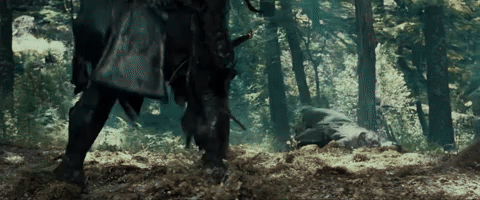
No other Orc has left such an imprint on the franchise. You might even say he’s the One Henchman to Rule Them All.
Kronk, The Emperor’s New Groove
If you asked my 8-year-old self what the greatest movie ever made was, I’d have gone with The Emperor’s New Groove, and you know what? I stand by it today. The meta humor is basically Deadpool by way of Disney animation, and a large part of what makes the film work is its inclusion of the Henchman GOAT: Kronk (Patrick Warburton). The right-hand man of Yzma (Eartha Kitt), who is the spiteful adviser to Emperor Kuzco (David Spade), Kronk is a human golden retriever who behaves like he’s in a different movie altogether. On the night that Yzma plans to poison Kuzco over dinner, Kronk is far more concerned with how his spinach puffs will turn out. He gives himself his own theme music while on a mission. In The Emperor’s New Groove’s funniest scene, he seamlessly takes over a restaurant kitchen.
Of course, the key ingredient to Kronk’s greatness is Warburton, whose deep, dopey voice gives off perfect himbo energy. Adding Kronk to the Henchman Hall of Fame? Oh yeah, it’s all coming together.
Michael Armstrong, Hot Fuzz
Before Rory McCann was Game of Thrones’ Sandor Clegane, a ruthless fighter with a softer side lurking behind all the trauma, he played a very different kind of henchman in Hot Fuzz. As Michael Armstrong, the dimwitted trolley boy of supermarket manager Simon Skinner (Timothy Dalton), McCann says only some variation of “yarp” (yes) or “narp” (no). Of course, Michael doesn’t have to say anything in Skinner’s employ: All he needs to do is act as the muscle for Sandford’s sinister Neighbourhood Watch Alliance, which has been killing anyone who may pose a risk to the village’s sterling reputation. While Michael is strong, he’s also easily distracted, as seen when police sergeant Nicholas Angel (Simon Pegg) distracts him with a teddy bear.
Do I feel bad for Michael that he’s been used by nefarious forces as a blunt instrument of violence? Yarp. Does that totally absolve Michael of the heinous acts he’s committed for the Neighbourhood Watch? Narp.
Alpha, Up
If someone is in need of a loyal henchman, it’s hard to do better than man’s best friend. In Pixar’s Up, the explorer Charles Muntz (voiced by Christopher Plummer) has a loyal pack of dogs at his disposal led by Alpha (Bob Peterson), a fearsome-looking Doberman. The dogs are equipped with special collars that allow them to talk, and while we hear glimpses of Alpha’s real voice—deeper, more intimidating—he spends most of the movie dealing with a malfunction that leaves Alpha with a much higher register. I can’t stress this enough: There’s nothing funnier than a menacing villain barking orders (pun unintended) while sounding like he just inhaled a bunch of helium. I adore this movie, especially how it captures the energy of dogs and the ways in which they can easily be—SQUIRREL!
Lazarus, The Beekeeper
I have already sung the praises of Lazarus, the reason the Henchman Hall of Fame was created in the first place, so let me give a shout-out to his death scene. Going up against Statham’s Beekeeper is one hell of a challenge: He does, after all, spend most of the film mowing down dozens of elite mercenaries without breaking a sweat. But Lazarus puts up a good fight, even managing to stab his adversary in the torso. And when the Beekeeper does get the upper hand, he grants Lazarus the honor of an epic death, stabbing him repeatedly before finishing the henchman off with his own brass knuckles.
Lazarus, thank you for your service. I hope that, like your biblical namesake, you will be brought back to life in The Beekeeper 2.
